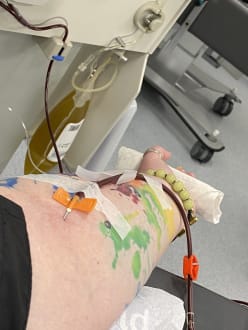New Bioinspired Approach to Sepsis Therapy from Wyss Institute on Vimeo
Harvard scientists have invented a new artificial spleen that is able to clear toxins, fungi and deadly pathogens such as Ebola from human blood, which could potentially save millions of lives.
Blood can be infected by many different types of organ infections as well as contaminated medical instruments such as IV lines and catheters.
When antibiotics are used to kill them, dying viruses release toxins in the blood that begin to multiply quickly, causing sepsis, a life-threatening condition whereby the immune system overreacts, causing blood clotting, organ damage and inflammation.
It can take days to identify which pathogen is responsible for infecting the blood but most of the time, the cause is not identified, while the onset of sepsis can be hours to days. Broad-spectrum antibiotics with sometimes devastating side effects are used and currently over eight million people die from the condition worldwide annually.
Even with the best current treatments, sepsis patients are dying in intensive care units at least 30% of the time,
said Dr Mike Super, senior staff scientist at Harvard’s Wyss Institute for Biologically Inspired Engineering, which led the research. We need a new approach.
To overcome this, researchers have invented a biospleen
, a device similar to a dialysis machine that makes use of magnetic nanobeads measuring 128 nanometres in diameter (one-five hundredths the width of a single human hair) coated with mannose-binding lectin (MBL), a type of genetically engineered human blood protein.
The study, An Extracorporeal Blood-Cleansing Device For Sepsis Therapy, has been published in the journal Nature Medicine — via redwolf.newsvine.com














 RSS – Posts
RSS – Posts